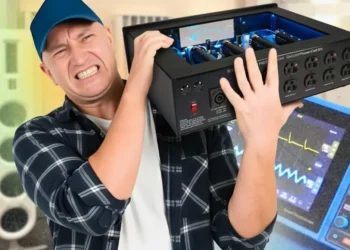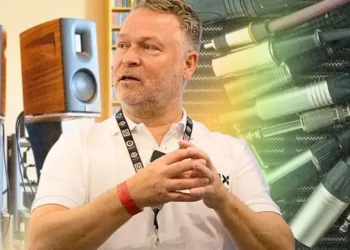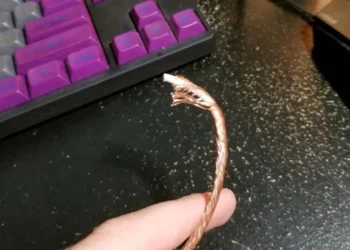21 Common Problems with Vintage Audio Gear That Collectors Can’t Ignore
Written: August 7, 2025 – 14:00 (U.S. Eastern Time)
Vintage audio equipment evokes feelings of nostalgia, craftsmanship, and superior analog sound. However, beneath the iconic styling and warm tones lies a list of technical and mechanical issues that even seasoned collectors face. Whether you’re restoring a tube amplifier or maintaining a turntable from the 1970s, these common pitfalls are part of the journey.
1. Aging Capacitors Lead to Costly Circuit Damage
Many vintage components rely on electrolytic capacitors that degrade over time. When these capacitors leak, they corrode nearby circuit traces and components. Preventative recapping is essential—and often costly—to maintain performance and prevent irreversible damage.
2. RIFA Safety Capacitors Fail in Dramatic Fashion
RIFA capacitors are known for catastrophic failures, producing smoke and debris when they explode. These parts absorb moisture and crack internally, making them hazardous. Replacing them with modern X2-rated safety capacitors is strongly recommended.
3. Replacement Parts Can Be Nearly Impossible to Source
From discontinued ICs to custom semiconductors, many vintage audio systems use components no longer in production. This makes repairs difficult and sometimes financially impractical unless donor units or circuit modifications are used.
4. Selenium Rectifiers Emit Toxic Fumes
Selenium rectifiers are outdated and can emit harmful odors when they fail. Most restorers replace them with modern silicon diodes to enhance performance and eliminate health risks.
5. High Voltage Today Can Stress Vintage Designs
Vintage gear was built for 110–117V AC power. Modern household voltage often exceeds 120V, which can overstress power supplies and components. Many audiophiles use variacs or bucking transformers to protect their gear.
6. Foam Speaker Surrounds Rot Over Time
Foam surrounds, used in many speakers for enhanced bass, are prone to disintegration due to environmental exposure. Refoaming is possible but may not restore original performance.
7. Rubber Belts and Idlers Degrade and Disrupt Playback
Decks that rely on rubber belts or idler wheels suffer from speed instability as the rubber ages. Replacement belts are often available, but sourcing high-quality idler wheels is more difficult.
8. Plastics in Older Units Become Brittle and Break Easily
The plastics used in vintage gear often degrade, cracking during routine maintenance. While some parts can be 3D-printed, matching the original appearance and function remains a challenge.
9. Sticky Rubber Can Ruin Surrounding Components
Rubber parts in older devices can become sticky over time, damaging other components they touch. Cleaning degraded rubber requires care to avoid harming wood finishes or delicate surfaces.
10. Tape Deck Components Wear and Affect Performance
Pinch rollers and capstans in tape decks wear over time, reducing speed stability and increasing the risk of tape damage. Professional rebuilds are available but costly.
11. Factory Adjustments Are Difficult to Access
Many vintage devices use glue or thread-locking compound to secure adjustment points. Accessing and calibrating these often requires disassembly and specialized tools.
12. Dust in Potentiometers and Switches Causes Audio Dropouts
Vintage gear frequently uses open-frame pots and switches that attract dust and moisture. Even with contact cleaner, repeated cleaning may be necessary—or parts may need full replacement.
13. Selector Switches Wear Out and Are Hard to Replace
Input selector switches often fail due to worn plating and corrosion. Original replacements are rare, and fixes require labor-intensive retrofitting or custom fabrication.
14. Some Vintage Amps Overheat and Fail
Aging solid-state amplifiers can suffer from thermal runaway due to transistor drift and improper biasing. If not caught early, overheating can destroy output stages entirely.
15. Tubes Require Ongoing Maintenance and Costly Replacements
Tube gear needs periodic bias checks and tube replacements. Some designs are user-friendly, while others require precision tools and matched tube sets, which can be expensive.
16. Modern Speakers Can Overload Vintage Amps
Many vintage amps are optimized for stable 8-ohm loads. Modern speakers with lower impedance or complex crossovers may push these amps beyond their design limits. Impedance-matching transformers or high-efficiency speakers are safer options.
17. Idler-Drive Turntables Can Transmit Motor Noise
Idler-wheel turntables, though prized for torque, may introduce rumble if not maintained. Restoring these decks with new wheels and damping can greatly reduce noise.
18. Setup Challenges with Vintage Tonearms
Some vintage tonearms offer limited adjustment options or were made for obsolete cartridges. Proper alignment may require special tools or part replacements for optimal tracking and sound quality.
19. Anti-Skate Systems Lose Accuracy Over Time
Spring- or magnet-based anti-skate mechanisms degrade with age. When misaligned, they cause uneven channel balance and record wear. Replacing or recalibrating these systems can be difficult due to part scarcity.
20. Persistent Hum from Power Supplies Is Hard to Eliminate
Vintage transformers and poor internal layouts can introduce audible hum. Even after replacing capacitors, some designs continue to emit low-frequency buzz that’s hard to fully resolve.
21. Over-Sensitive Protection Circuits Can Disable Gear
Protection systems in vintage amps were often over-engineered and intolerant of small variations. Drift in components can cause the amp to shut down unnecessarily. Proper recalibration requires technical expertise and time.
Final Thoughts
Vintage audio gear carries unmatched character and craftsmanship. But it also demands ongoing maintenance, technical skill, and sometimes costly restoration. Collectors and audiophiles willing to face these challenges are rewarded with timeless sound—but it’s not a hobby for the faint of heart.
This article was rewritten by JournosNews.com based on verified reporting from trusted sources. The content has been independently reviewed, fact-checked, and edited for accuracy, neutrality, tone, and global readability in accordance with Google News and AdSense standards.
All opinions, quotes, or statements from contributors, experts, or sourced organizations do not necessarily reflect the views of JournosNews.com. JournosNews.com maintains full editorial independence from any external funders, sponsors, or organizations.
Stay informed with JournosNews.com — your trusted source for verified global reporting and in-depth analysis. Follow us on Google News, BlueSky, and X for real-time updates.











